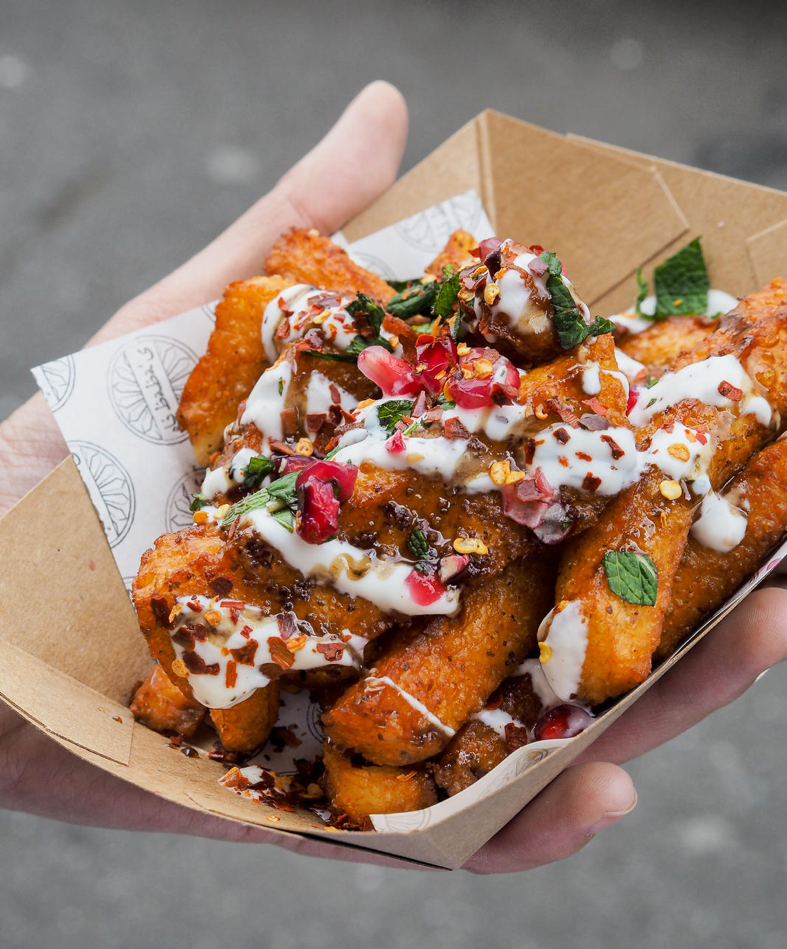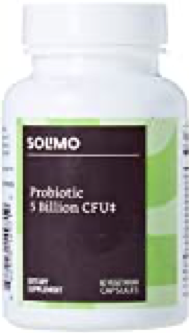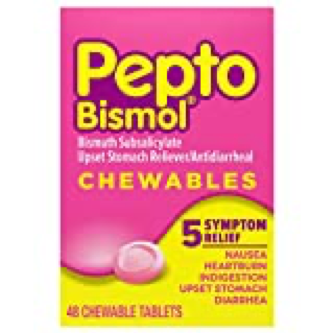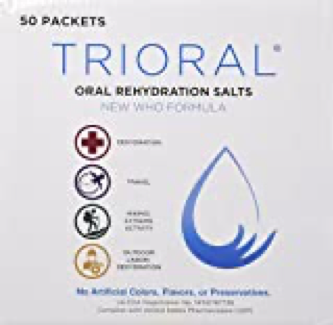Follow these 14 tips to better the odds of avoiding traveler’s diarrhea and other stomach bugs.

I love street food. It’s a way to connect with the local culture as well as enjoy truly delicious cuisine.
While I don’t have a cast-iron stomach, I’ve had food poisoning only twice in my life. Both times were from eating at fancy restaurants; once in the USA, the other in Spain. That’s why it pains me when people avoid eating street food thinking that restaurants are safer. They’re not.
Once you know what to look for, you’re on your way to a safe, delicious meal that can serve as an experience as well as sustenance. No method is fool-proof, but this is what has worked for me eating street food in India, Africa, Vietnam, Turkey, other European and Asia countries, and yes, even the USA.
- Look at the lines.
Eat at the stalls with the longest lines. Yes, you’ve heard it before, and yes, it’s still good advice. But I take it one step further: Look at who is in line.
Is it only construction workers, men in their twenties and thirties? I’d surmise that meant the place was cheap but not necessarily good. (The worst—and cheapest—pizza I ever ate was the slice I bought in Venice at a café filled with construction workers.)
Or is the line populated with kids, women, elderly people—that is, people with perhaps less than robust digestive systems? This suggests the food stand has a reputation of being safe for everyone, not just the heathiest segment of the population.
I’d take a stall with a line of men over one with no one standing in front of it, but I’d choose a line with women and kids over one of all men.
- Lunch at school.
Check out lunch places near a university. Students are hungry and cheap. The café or food stall probably won’t be the best meal of your life, but it will be fast, cheap, and usually fairly delicious.
DON’T eat at one of these places for dinner, as the food will have probably been sitting since it was prepared before noon.
- Eat what you can see being prepared.
Favor places where you can see how the food is handled. Is the same person taking the money also handling raw ingredients? I’ll pass. Ditto if they use plastic gloves…and don’t take them off when making change. Ideally, you want a two-person operation: one on the register and the other working the kitchen.
Speaking of kitchen, can you see it? Whether it’s behind a glass wall, just off the bar, or on the street, it’s better if you can see your food prepared. Just because a restaurant has a fancy dining room doesn’t mean they’re practicing good hygiene in the kitchen you can’t see.
- Is street food part of the local culture?
If I’m in a place like Singapore or Saigon where there’s a culture of food stalls, then I’ll likely eat most of my meals on the street.
- Have a few phrases memorized or written down.
Vegetarian? Gluten-free? Allergies? Know how to make those preferences clear in the local language. It doesn’t help to have them written down; as I discovered, many people working food stalls in other countries can’t read. So practice your pronunciation or make sure you have a data plan that covers Google or Apple Translate. And make sure the translation is accurate! Check it out with the staff at your hotel or your Airbnb before you go out to chow down.
- Pay attention to dishes and cutlery.

Dishes and cutlery can be a source of bacteria even if the food is safe. I carry anti-bacterial wipes with me for a quick wipe-down of chopsticks or metal utensils. Or you can bring your own: I like these collapsible chopsticks ($10) and Spork ($13/4).

You can also buy a portable cutlery kit with fork, spoon, and chopsticks all in one.
- Opt for morning markets.
I prefer buying street food from a local produce market, especially in the morning. Whether it’s Madrid or Mumbai, every open-air market usually sells cooked food as well. Because these stalls are set up to feed hungry shoppers, the turnover is quick and the food probably healthier than the hotel buffet that may sit for several hours at room temperature.
- Adjust to local meal times.
Even if you’re used to eating lunch at 11:30AM, if the norm in the place you’re visiting is 1 PM, wait until then to chow down. Ditto for dinner. This is especially important when dishes are set out buffet-style. You want to eat them piping hot and freshly cooked, before bacteria has a chance to form as the food cools.
- Make sure the food is cooked all the way through and still hot.
If something is supposed to be cooked but is underdone, ask for it to be cooked some more. If you bite into something and find a cool center, stop eating it!
Fully cooked food is safer than raw. So as appetizing as the raw shrimp in Bangkok may look, you may want to pass unless you have a stomach you think can handle it.
- Avoid ice and water.
If you don’t know what type of water the ice was made from, don’t put it in your drinks. And it goes without saying not to drink the water unless it is from a bottle you broke the seal on. In cities with questionable tap water, I brush my teeth with the bottled stuff and make sure not to swallow any spray in the shower.
- Vegetarian for the duration.
While I’m pescatarian (mostly vegetarian, but I also eat dairy, eggs, and fish), I give up things if I’m in a place where they’re dicey. If you’re a carnivore, you may want to forego beef, pork, and poultry in places where water-borne bacteria are a risk.
- No fruit you haven’t peeled yourself.
Until you are used to a place and its local bacteria, eat only peelable fruit: mangoes, bananas, papaya, etc. Want an apple? Remove the skin first. And avoid water-heavy vegetables and fruits like lettuce and strawberries.
- Take care with sauces and condiments.
I love spice, which means I’m happy to heap on the salsa and hot sauce. But they can cause digestive problems if they’re kept at room temperature over time, thus allowing bacteria to breed. I gauge my sauce usage on the circumstances. If I’m having a dish that is liberally sauced (shrimp potstickers with chili paste and white vinegar), I’m in. If I see crust on the sides of the sauce bottle or condiment jar (indicating it’s sat out for a while) or the sauce or condiment isn’t liberally used, I pass.
- Take three and you may not have to call the doc in the morning.

I take a heat-resistant probiotic every day. If probiotics aren’t already part of your supplement plan, you may want to start taking them a week before your trip, continuing every day during, and ending about 5-7 days after you get back home. Some research shows these friendly bacteria help avoid diarrhea.
When traveling in areas where food poisoning is more of a risk, I also take:

a) Grapefruit seed extract. Its main compound acts as an antimicrobial and antioxidant.

b) A Pepto-Bismol tablet before every meal. Its active ingredient reduces inflammation and blocks toxins produced by E. coli bacteria, and kills other bacteria that cause diarrhea.
Check with your doctor before taking any of these things. I’m just sharing what has so far worked well for me.
And if you do get food poisoning?
The tips above can’t guarantee you won’t get sick. Truth be told, food poisoning is part of traveling.
If you do contract a bug, you can either self-medicate (with a prescription anti-diarrheal obtained from your doctor before your trip) or visit a local doctor, who will probably be familiar with traveler’s diarrhea and related viruses.

Suggestions for rehydration include Trioral oral rehydration salts (recommended by WHO), bread or rice, and bananas. You may want to avoid sweetened electrolyte drinks; there is some evidence the sugar in them feeds the bacteria you are trying to banish from your system.
Twist’s Take: Follow these tips to decrease your chance of food poisoning. If you do get diarrhea, take your meds, rehydrate, and try not to stress too much about it—it’s part of exploring a new place!
